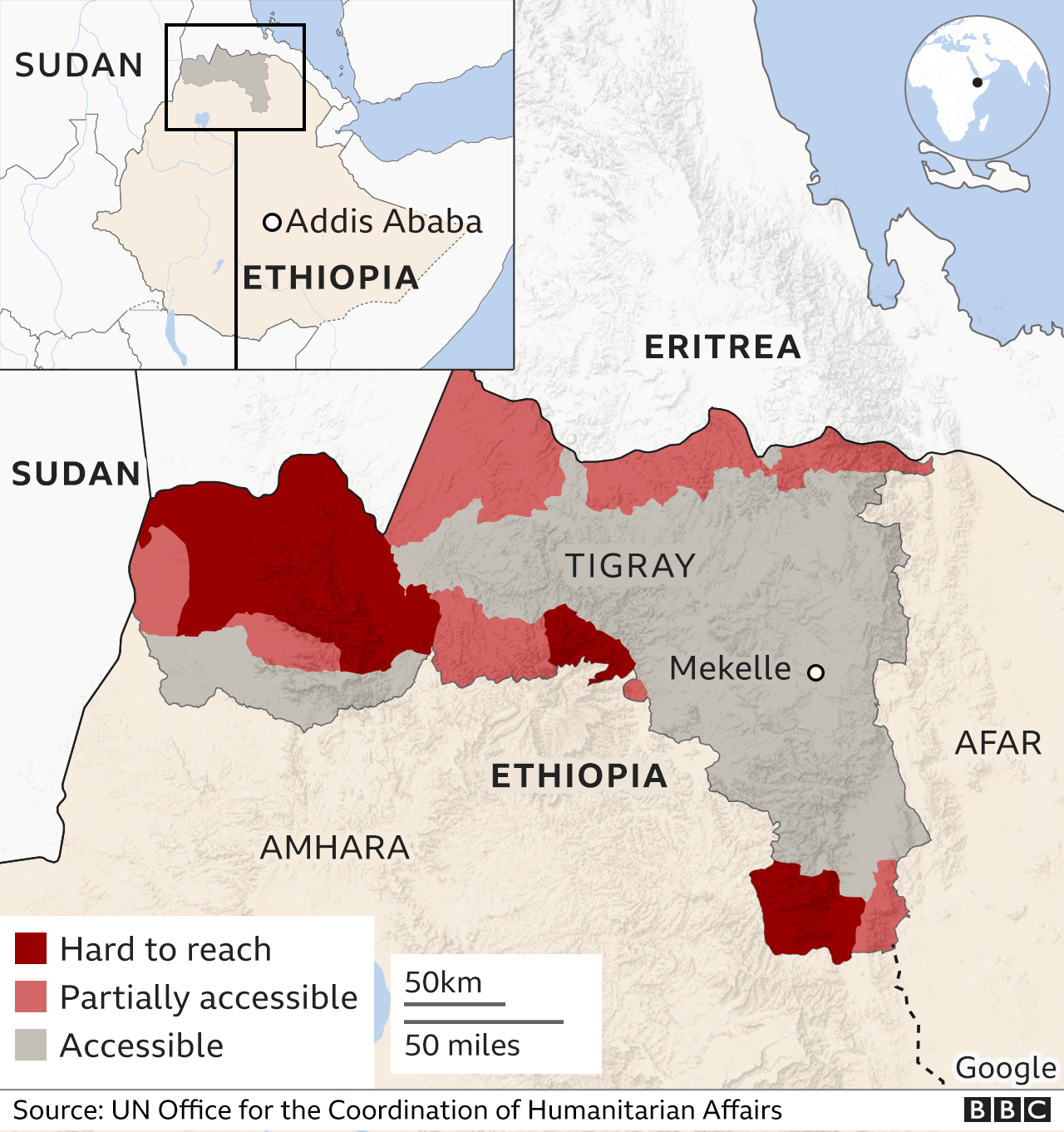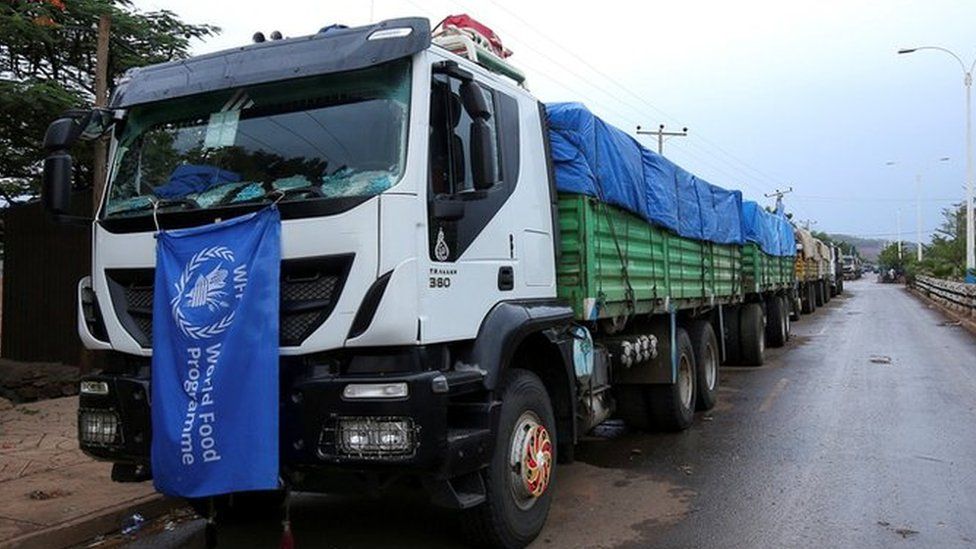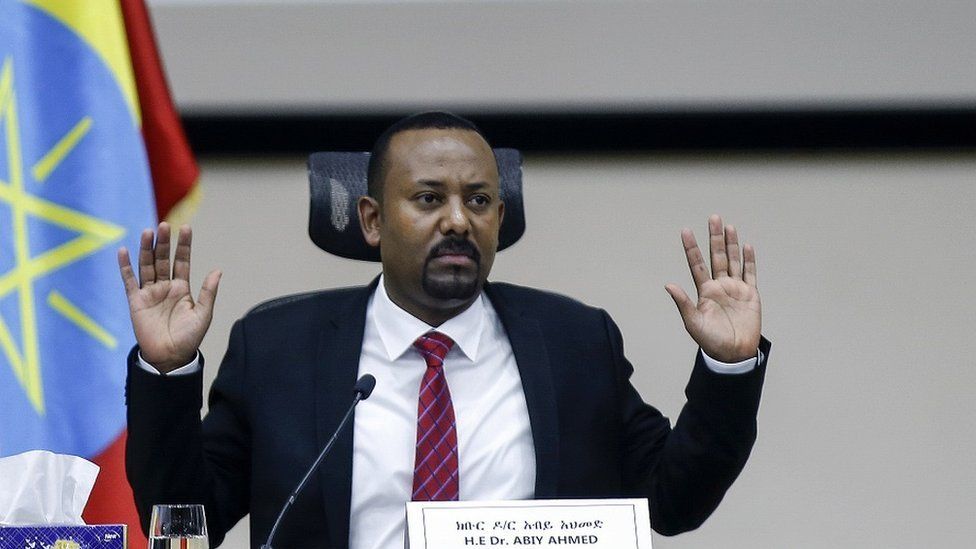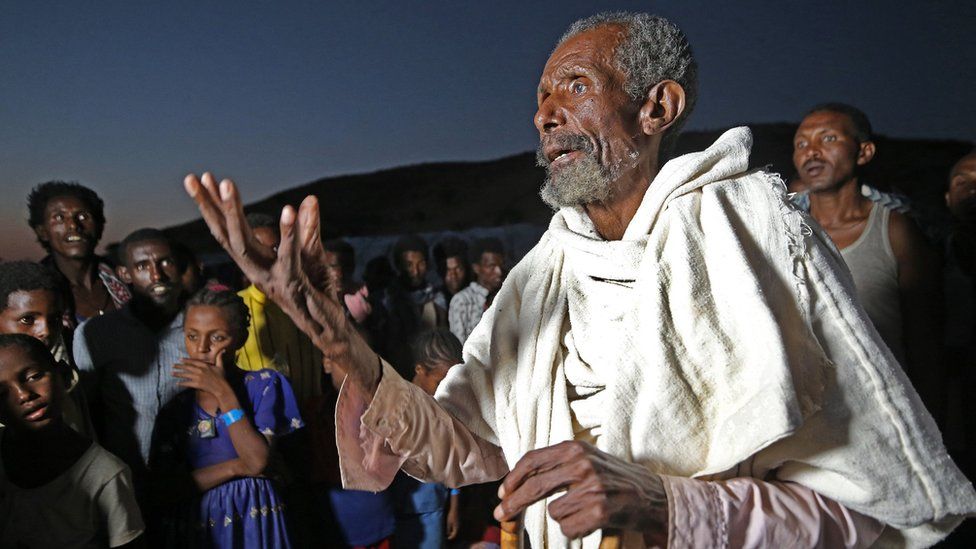By Peter Mwai

More than a million people have been displaced by the conflict in Tigray
Aid convoys are facing significant obstacles in reaching parts of Ethiopia’s northern region of Tigray, due to renewed fighting between government and Tigrayan forces.
The UN says more than five million people are in dire need of humanitarian assistance in the region.
Where isn’t aid getting through?
Delivering aid to Tigray has been extremely challenging over the past few months, despite the urgent need there.
It follows a bloody eight-month battle between the Ethiopian army and the Tigray People Liberation Front (TPLF) for control of the north Ethiopian state.
Now the fighting has now spilled over into the neighbouring Afar region to the east, threatening one of the key supply routes into Tigray.
Tens of thousands have been displaced by the latest unrest, making the need for humanitarian support ever more urgent.
There are parts of Tigray where it has been possible to reach those in need – particularly areas now stable and under the control of the TPLF. The UN estimates that overall, 75% of people in need in Tigray are now reachable; in May, this figure was only 30%.
But the UN also warns that “stocks are rapidly depleting” even in these areas, with access far from straightforward.

Only one UN food convoy has successfully reached Mekelle this month: 54 trucks with food and other critical aid arrived in the regional capital on 12 July “after days traversing roadblocks”.
This represents just 1% of the food that is needed for the month, says Samantha Power, of US Agency for International Development (USAID).
The UN calculates at least 60 trucks need to be arriving in Tigray every day, in order to fully meet the requirements of those people caught up in the crisis.
Blocking of aid convoys
All flights into the Tigray region have been halted since late May, meaning bringing in aid by air has not been possible, so all supplies have to be brought in by road.
But many of the overland routes have been blocked.
To the south, pro-government forces in the Amhara region have been preventing supplies getting through. A 29-truck convoy carrying World Food Programme (WFP) aid was forced to turn back on 29 June, reports the UN.
It’s also been impossible to bring in aid by road from Sudan, into western Tigray, an area under the control of groups supporting the Ethiopian government.

Humanitarian convoys are facing severe problems accessing the region, as fighting escalates
Until recently therefore, the only passable land route has been through eastern Tigray, with convoys entering via the Afar region of Ethiopia.
However, with recent fighting spilling into Afar, this route in now in jeopardy as well.
Last week, the WFP suspended movement of convoys from Afar into Tigray after a convoy of 10 vehicles was attacked. It’s not clear who carried out the attack, but observers suggest pro-government militia were responsible.
A further convoy of more than 200 trucks remains on standby in the Afar town of Semera, but the WFP says the trucks won’t leave for Tigray until the security situation improves.
Government accusations
The head of Ethiopia’s disaster relief agency, Mituku Kassa, has accused the TPLF in the Afar region of stopping aid trucks destined for Tigray.
Prime minister Abiy Ahmed has also accused the rebels of blocking humanitarian assistance to Mekelle through the Afar region, by bombarding the road with heavy artillery.
The TPLF has not commented on the government’s claim but has previously said it would “extend whatever support is necessary to ensure the safety and security” of aid workers.
Meanwhile, the UN says checkpoints set up on the main routes into Tigray have delayed movement of humanitarian cargo.
The government has been critical of aid organisations and has insisted on checking all the cargo being transported.

Prime Minister Abiy Ahmed has accused the TPLF of blocking humanitarian aid
It comes after Foreign Affairs minister Redwan Hussein accused certain, unspecified, humanitarian organisations of working to arm the TPLF, claiming the government had caught them delivering weapons and equipment to the rebels.
“They have been using aid as a cover and arming the rebel groups to prolong the conflict and chaos,” he said, in a televised address.
The Doctors Without Borders says public statements casting suspicion on aid organisations’ activities are jeopardising the safety of local aid workers.
The UN says 12 aid workers have been killed in the region since fighting broke out in November last year.

More than a million people have been displaced by the conflict in Tigray
Communications blackout
Earlier this month, on 5 July, the government announced it would allow humanitarian flights.
However, it has put in place strict controls – including a requirement for all flights to land first in the Ethiopian capital, Addis Ababa, for inspection.
So far, these flights have only included a limited number of humanitarian personnel but not food aid.
The international relief operation is also facing severe financial constraints. The UN estimates that it needs $435 million additional funding between now and December 2021.
Large parts of the region have been under a communications blackout and without electricity, affecting delivery of key services.
“Shortages of fuel and cash, as well as a communications blackout, are significantly hindering the resumption and preventing the scale-up of humanitarian response,” the UN says.
Source: BBC


